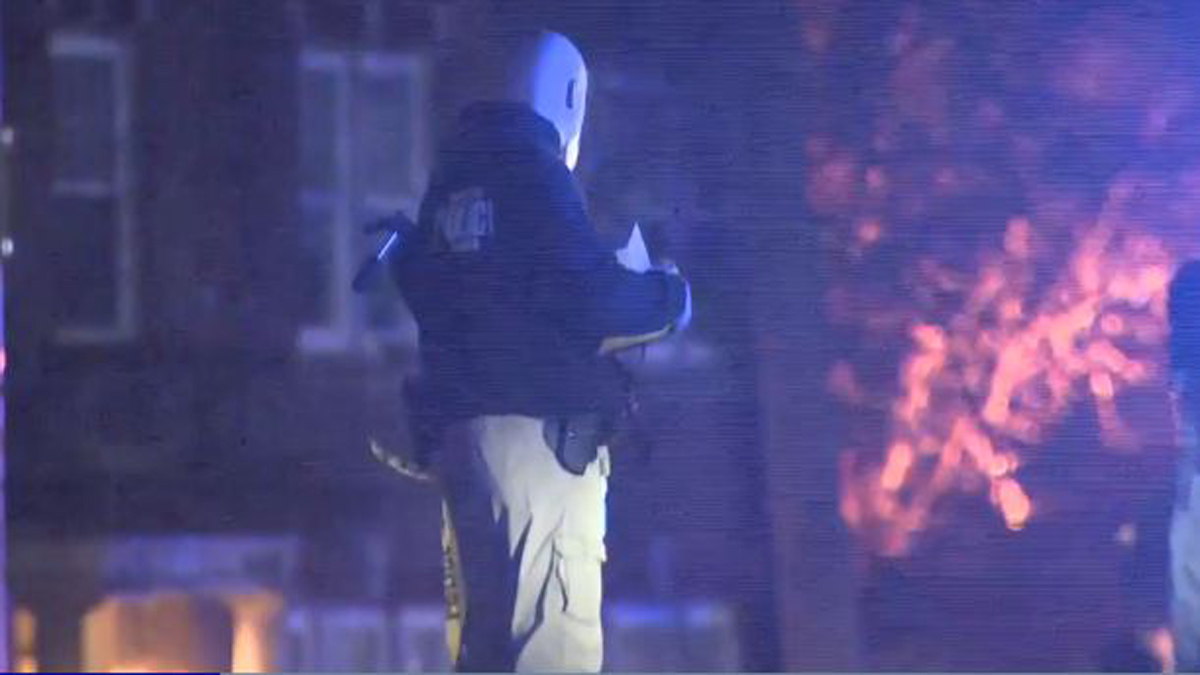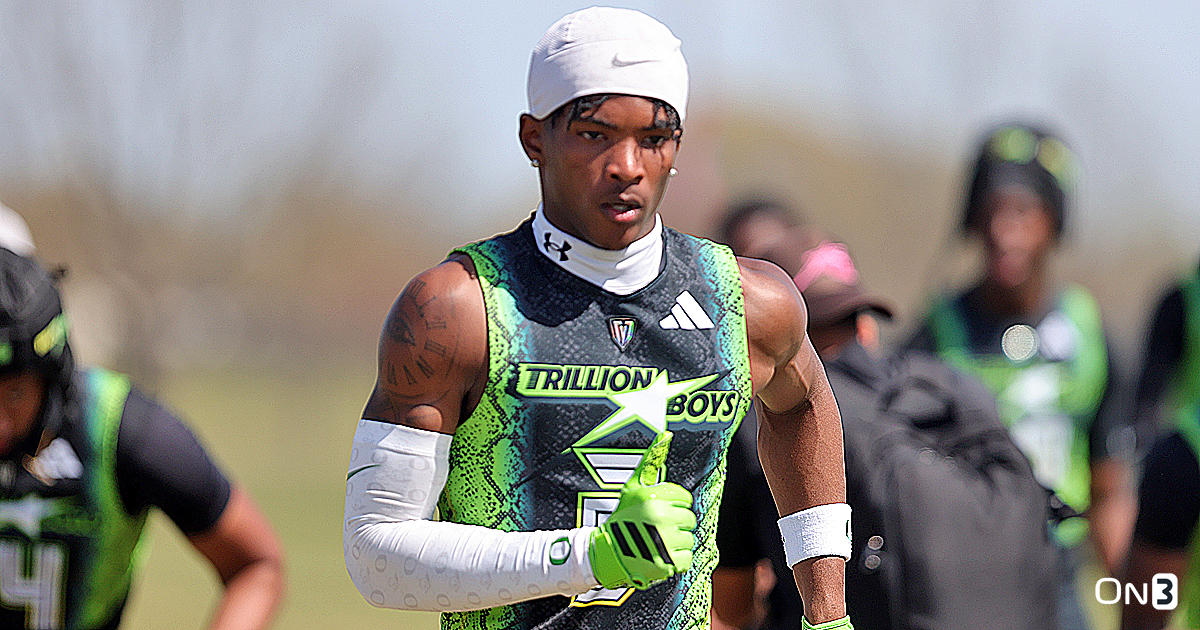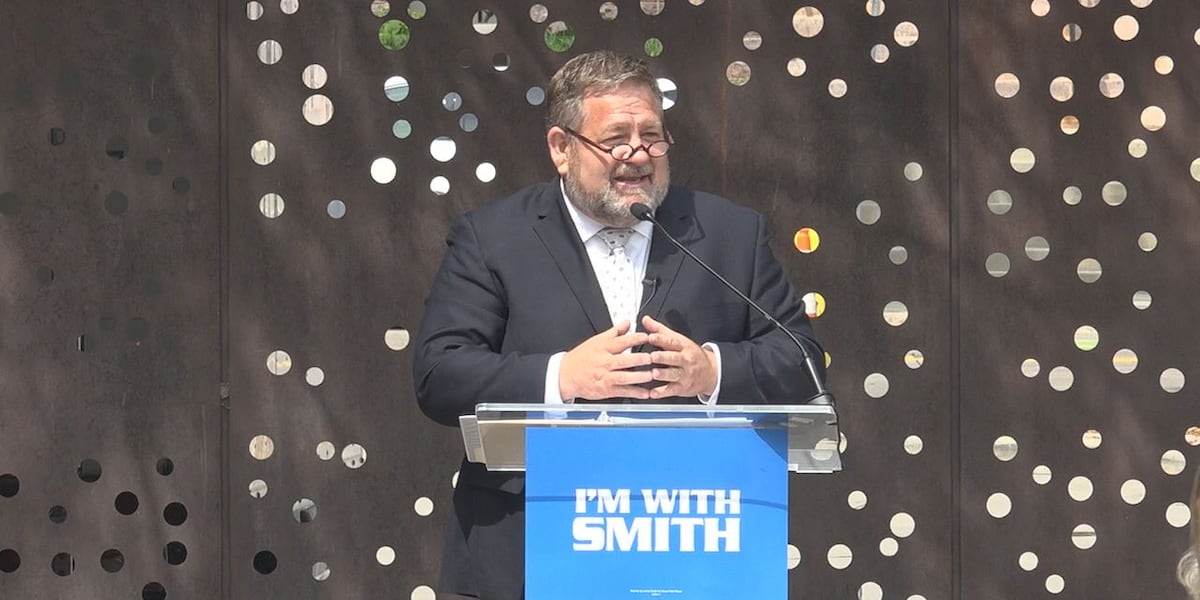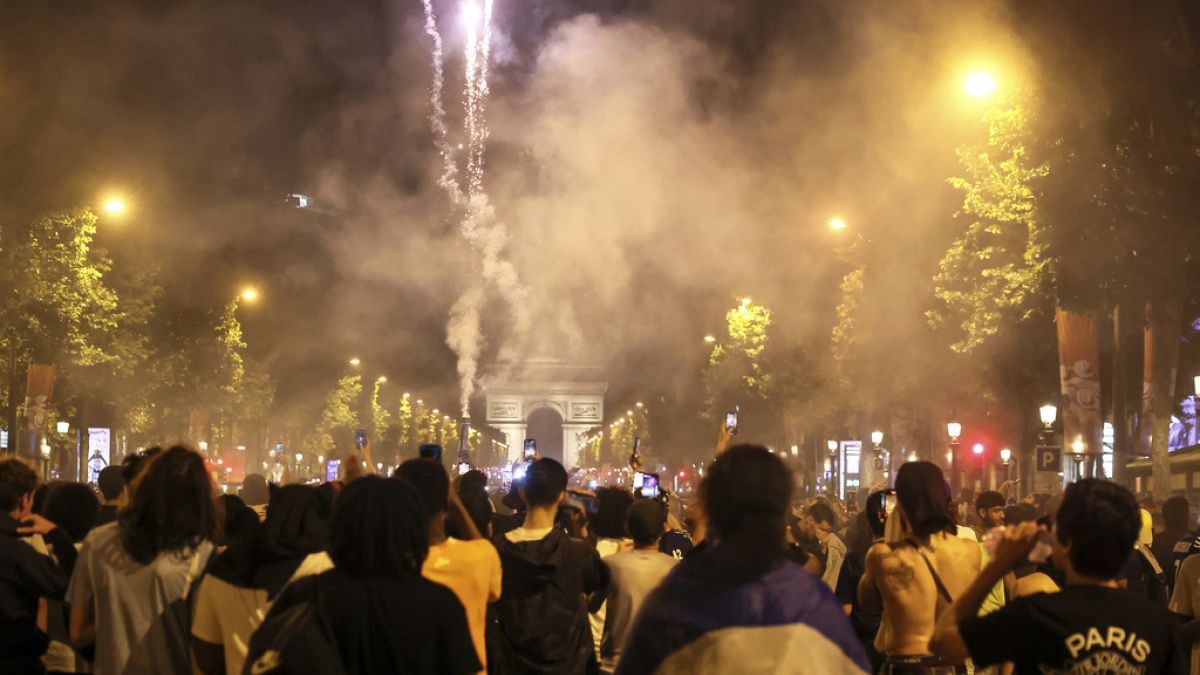North Dakota
McFeely: One of worst days in Fargo’s history was going to be much, much worse

FARGO — It’s the picture that sends shivers down your spine. Three guns that appear to be assault-style weapons. Four handguns. A homemade grenade. And some 1,800 rounds of ammunition.
There was going to be a mass shooting in Fargo.
It was likely going to be downtown, at the street fair. Where there were thousands of people gathered in tight quarters.
North Dakota Attorney General Drew Wrigley didn’t say that directly Wednesday, but he hinted strongly that is where Mohamad Barakat was headed before a chain of events stopped him.
Some of the events appear to be happenstance.
Some were most definitely heroic.
One police officer is dead.
Two more are gravely injured.
An innocent civilian suffered serious injuries
after being shot, purposely, by Barakat last week in the tragedy that’s shocked Fargo.
It’ll go down as one of the worst days in the city’s history.
It was going to be incalculably worse.
That it wasn’t is due to the heroism of Fargo Police Officer Zach Robinson, who engaged in a two-minute gunfight with Barakat — an eternity — before killing the shooter. Robinson is a bona fide hero, a word thrown out far too often.
The AG, Police Chief Dave Zibolski and Mayor Tim Mahoney got this right: Robinson’s actions appear to have prevented more carnage in our community.
Barakat was intent on killing people. Lots of people. Men, women and children. Our families. Our friends. Our neighbors.
The rumor bouncing around town since last Friday’s tragedy was that Barakat was headed downtown to the street fair before he was distracted and sidetracked by a minor car accident on 25th Street South that attracted police officers and other first responders.
It seemed far-fetched. It apparently was not.
Wrigley said video shows Barakat appearing to “case” the situation, driving around a parking lot. He shot Fargo police officers Jake Wallin, Andrew Dotas and Tyler Hawes at close range from his vehicle. He took aim and shot bystander Karlee Koswick as she attempted to run away. Wallin died. Dotas, Hawes and Koswick are hospitalized.
“By the grace of God” — a phrase used more than once Wednesday — Robinson was standing away from his fellow officers. He was able, eventually, through heroic action, to shoot and kill Barakat.
Thank God.
Thank God.
Wrigley said he and other law enforcement officials will discuss Friday why they believe Barakat was headed downtown, “about a 4 or 5 minute drive” from where the event on 25th Street occurred. The Downtown Fargo Street Fair was in full swing at the time, with streets blocked off for vendors and food trucks and people looking for summer fun.
There are so many questions. There are so many things that still need to be answered and explained. Who is Barakat? What was his motive? Why did he stop? How can a man with apparently no criminal record be responsible for such mayhem? Why does he have no social media footprint, not even a photograph somewhere online, in the year 2023? What do the American flags on the ammunition magazines mean?
The list is endless. Maybe some will be answered later this week.
For now, we know that — as bad as the killing of Wallin and the injuries to three others are — Fargo was headed to something much, much worse.
Barakat had 1,800 rounds of high-powered ammunition and a grenade. Headed to downtown, which was packed shoulder-to-shoulder with people.
Carnage. Or something beyond.
How many could it have been?
By the grace of God, indeed.
Mike McFeely is a columnist for The Forum of Fargo-Moorhead. He began working for The Forum in the 1980s while he was a student studying journalism at Minnesota State University Moorhead. He’s been with The Forum full time since 1990, minus a six-year hiatus when he hosted a local radio talk-show.

North Dakota
Social Media Reaction to Kansas Baseball Season Ending Loss to North Dakota State

Oregon getting eliminated as a regional host after two games is the biggest upset of the NCAA baseball tournament, but Kansas might be second.
The Jayhawks got crushed by Creighton, 11-4, on Friday in their first NCAA Tournament game since 2014 and lost to North Dakota State, 4-3, in an elimination game on Saturday, marking an end to arguably the second-best season in program history.
Despite getting eliminated from the NCAA Tournament on Saturday, Kansas set a school record and led the Big 12 with 20 conference wins and finished tied for second in program history with 43 total wins on the season.
Still, few expected the Jayhawks’ season to end the way it did — two straight losses in the NCAA tournament against teams they were favored to beat. And before the NCAA Tourney, Kansas got smoked by TCU, 11-1, in eight innings in the Big 12 Tournament Semifinals.
And social media did what it does best: let the world know how they feel, especially when they’re angry or disappointed.
That’s a tough pill to swallow, especially for a team that was projected to make it to the Regional Finals, and maybe even challenge Arkansas for the Regional crown.
The good news is that Head Coach Dan Fitzgerald has something going in Lawrence; now all he has to do is sustain it. Kansas should have a couple of players selected in July’s MLB Draft, but after starting the season 8-0, and cruising through the Big 12 during conference play, it’s hard to look at the Jayhawk season as a complete success.
North Dakota
Lawyers clash over claims that prosecutors concealed important evidence in 1986 North Dakota murder case

DEVILS LAKE, N.D. — Prosecutors told the lawyer of a man convicted of a brutal 1986 stabbing murder that all of the state’s evidence in the case against his client was available to the defense under his office’s “open file” policy.
Now, almost 40 years after the murder, lawyers for Werner Kunkel, who is serving a life sentence, are arguing that the prosecution concealed key evidence that could have established Kunkel’s innocence.
Todd Burianek, Kunkel’s trial lawyer, maintains in court papers that statements from three witnesses — if they had been made available to the defense — would have enabled him to better investigate and question the witnesses in the 1995 trial.
All three witnesses gave statements to the prosecution saying they had seen the murder victim in the case, Gilbert Fassett, alive after Aug. 1, 1986. The date is crucial because multiple trial witnesses testified that they last saw Fassett alive that night while drinking with Kunkel in Devils Lake bars.
“As I looked into the case, I was focused on any evidence that might have suggested that Mr. Fassett was alive after August 1, 1986,” Burianek said in a sworn statement in support of Kunkel’s petition for relief, which if granted could result in a new trial or dismissal of the charge.
Burianek’s statement was filed May 23 in Ramsey County District Court along with a brief by his current defense lawyers, Dane DeKrey of Moorhead and James Mayer of the Great North Innocence Project in Minneapolis.
Kunkel, who after his conviction for Fassett’s murder changed his last name to Rümmer, is serving his life sentence at the James River Correctional Center in Jamestown. He was once granted parole on the condition that he be sent to Germany, where he was born and has citizenship, but the parole board rescinded the decision.
The Forum wrote about controversies in the case in a special series published in July 2024 titled
Who Killed Eddie & Gilbert?
There were no eyewitnesses in the case. Kunkel’s conviction relied heavily on prison and jail informants — witnesses
Kunkel argued had ulterior motives for implicating him,
including lenient treatment for themselves or
settling a grudge against him.
Studies have shown that “jailhouse snitches” are often unreliable and their testimony has resulted in wrongful convictions.
In his recent statement, Burianek said he made standard discovery requests seeking, among other things, all witness statements and “whatever potentially exculpatory evidence” was in the possession of prosecutors or investigators.
Burianek was given access to case documents in the Ramsey County State’s Attorney’s Office.
“It was represented to me that this was ‘open file’ discovery,” Burianek said in his statement. “In other words, based on our communication and common practices at the time, I expected that any potentially exculpatory evidence in the possession of the State’s Attorney or law enforcement would be contained in the field that the State’s Attorney permitted me to review.”
Exculpatory evidence is any information that helps prove a defendant’s innocence in a criminal case. Prosecutors have a duty to hand over to the defense any exculpatory evidence — even without being asked — under a landmark 1963 Supreme Court case, Brady v. Maryland, which established the Brady Rule.
Doug Broden, Rümmer’s lawyer in a 2006 appeal, also said he “believed in good faith” that all of the documents had been provided earlier to Burianek by the Ramsey County State’s Attorney’s Office under its Brady Rule obligations.
The three witnesses, and other newly discovered exculpatory evidence, only became known after Kunkel’s current attorneys asked for and received the prosecution’s case file in 2023.
Contributed / North Dakota Court System
As previously reported by The Forum
, one of the newly discovered witness statements came from a National Guard member, who told investigators he picked up Fassett on Aug. 2 — a day after jurors were told that Kunkel murdered the victim. The guardsman remembered the date because he had to fly out later that day for training, an obligation that was confirmed by Guard records.
“The state compensated for the lack of eyewitness testimony or physical evidence against Werner by repeating for the jury the mantra that no one saw Fassett alive after he was seen with Werner on the night of August 1, 1986,” his lawyers wrote in a brief.
The statements by “three different witnesses who independently reported seeing Fassett alive after that night, puts the lie to the state’s primary trial theme,” his lawyers added.
In response to defense allegations that the state concealed exculpatory evidence, Daniel Howell of the Ramsey County State’s Attorney’s Office denied that prosecutors suppressed evidence.
“While the State cannot claim that this evidence would not have had some benefit to Petitioner at trial, its overall effect on the result of trial would have been negligible in light of the other evidence presented at trial and would not have affected the verdict,” Howell wrote.
The claims raised in the latest appeal could have been raised at trial or in earlier appeals, including the evidence discovered in 2023, under a discovery request, Howell argued.
“This request could have been made at any time since Kunkel’s conviction in 1995, and an attorney exercising reasonable diligence at Kunkel’s first and second post-conviction efforts would have done so,” Howell wrote.
“To rely on a case file that has changed possession several times over many years, without reviewing any possible discrepancies between said files and the State’s evidence and case file might raise issues of ineffective assistance of counsel,” Howell added.
The prosecution also argued in its brief that the issues raised in the latest appeal already had been litigated, and their assertion now is a misuse of process.
In rebuttal, defense lawyers argue in their brief that prosecutors have a duty to turn over any exculpatory evidence, regardless of whether the defense demands it, and Howell is trying to “shift responsibility for its due process violation onto Werner,” a “misapplication” of the Brady Rule.
“I believe that having the Brady material available to me would likely have made a difference at trial,” Burianek said in his statement. “Without it, I was unfairly hamstrung in my ability to respond to the State’s primary theme: that no one saw Mr. Fassett alive after the night of August 1, 1986.”
A clarifying statement by the pathologist who performed the autopsy on Fassett presented by defense lawyers in the latest appeal also helped to prove innocence, Rümmer’s lawyers argue. The liver showed no evidence of alcohol, and there was no detectable amount of alcohol in his system, according to the autopsy.
“Given Fassett’s obvious state of severe intoxication on the evening of August 1, 1986, the new evidence establishes that Werner did not kill Fassett that night as maintained by the state,” DeKrey and Mayer wrote in their brief.
In response, Howell said Rümmer’s lawyers failed to address “other possibilities to explain the lack of alcohol in Fassett’s liver.”
Prosecutors presented little physical evidence in their case. One critical piece was a bloody shirt Fassett was wearing when his body was discovered at Ski Jump Hill, a landmark on Spirit Lake Nation near Fort Totten.
Mayer and DeKrey wanted to have Fassett’s clothing tested to see if it contained any DNA
from his assailant, but the shirt was no longer available. The two lawyers claimed Fassett’s clothing and other physical evidence from the scene was “intentionally destroyed” in “bad faith,” violating Rümmer’s due process rights.

Contributed
In response, Howell argued that Rümmer “raises no excuse as to why DNA testing could not have been done in prior proceedings.” DeKrey and Mayer argued that the intentional destruction of the physical evidence after trial violated local, state and federal policies and practices.
Suppression of exculpatory evidence can be grounds for prosecutorial misconduct. Lonnie Olson was the Ramsey County state’s attorney who prosecuted Rümmer. Olson, who now is a district court judge in Devils Lake, has declined to comment on the suppression allegations.
District Judge Barbara Whelan, who is seated in Grafton, is the judge handling the appeal. No hearing has been scheduled to hear the arguments.
North Dakota
Illini offer three-star tight end from North Dakota

Bret Bielema and the Illinois coaching staff continue to remain busy on the recruiting front after offering three-star tight end Ben Hynek on Thursday. And why shouldn’t they? The Illini have been on a roll lately.
Hynek, a junior tight end out of Stanley (North Dakota), is ranked No. 23 in the nation at his position and third overall in the state in the class of 2027, according to 247 Sports’ composite rankings. Hynek has eight offers so far, including two from Big Ten programs (Wisconsin and Minnesota) and two more out of the SEC (Auburn and Missouri).
The next step for the Illini will be lining up a visit to Champaign sometime this summer with Hynek, who went on two unofficial visits last month, to Minnesota and Iowa State. Hynek has excellent size for his age and position (6-foot-6, 245 pounds) and is a well-rounded athlete. He is also a pitcher on his high school baseball team and a shot-putter on the track squad.
Just as with any junior-to-be recruit, Hynek shouldn’t be expected to commit anytime soon. He has plenty of time before he needs to make a decision and will probably wind up fielding more offers from Power 4 programs over the summer.
Ranking the Top 5 Big Ten Basketball Offseasons: Illinois, Purdue, Michigan and More
Illinois Basketball’s Best of the Century: No. 9 Frank Williams
ESPN’s Stephen A. Smith Shouts Out Former Illini Terrence Shannon Jr. on ‘First Take’
-
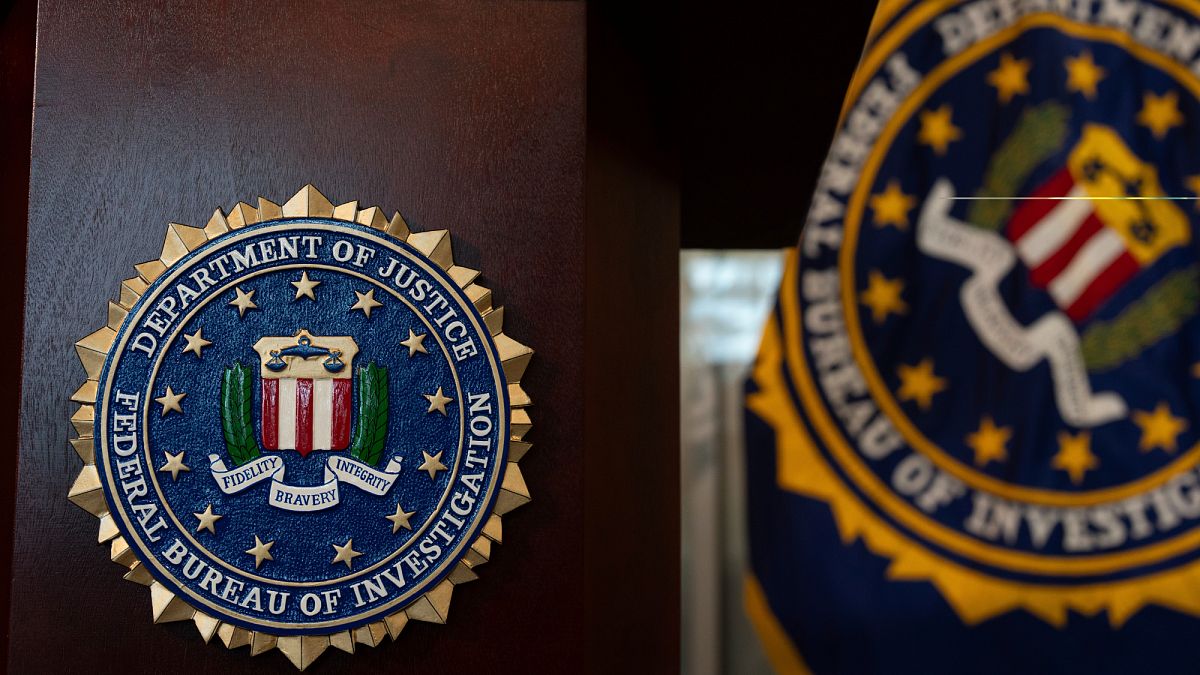
 World1 week ago
World1 week agoNeo-Nazi cult leader extradited to US for plot to kill Jewish children
-

 Technology1 week ago
Technology1 week agoDiscord might use AI to help you catch up on conversations
-

 Movie Reviews1 week ago
Movie Reviews1 week agoMovie review: 'Dogma' re-release highlights thoughtful script – UPI.com
-

 Business1 week ago
Business1 week agoPlastic Spoons, Umbrellas, Violins: A Guide to What Americans Buy From China
-

 World1 week ago
World1 week agoCade Cunningham Gains $45 Million From All-NBA Honors
-

 Movie Reviews6 days ago
Movie Reviews6 days agoMOVIE REVIEW – Mission: Impossible 8 has Tom Cruise facing his final reckoning
-
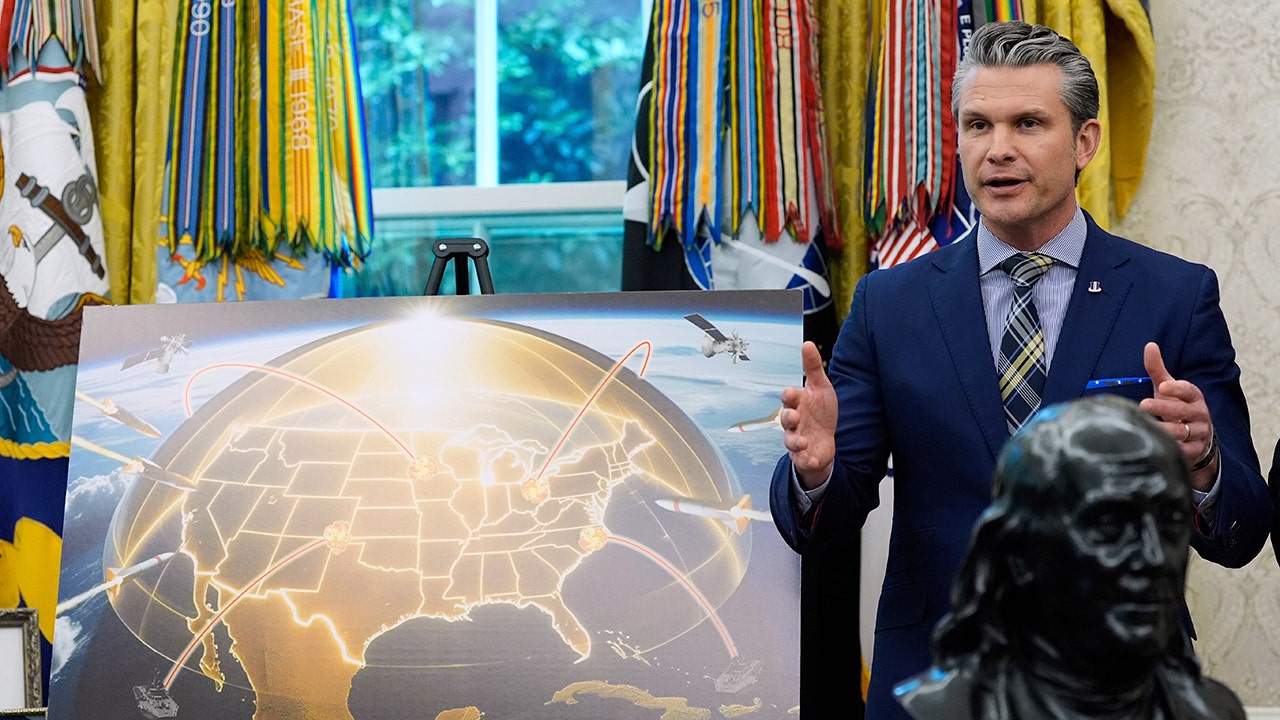
 Politics1 week ago
Politics1 week agoDefense secretary announces pay raises for Army paratroopers: 'We have you and your families in mind'
-

 Education1 week ago
Education1 week agoVideo: Judge Blocks Trump Move to Ban Foreign Students at Harvard








